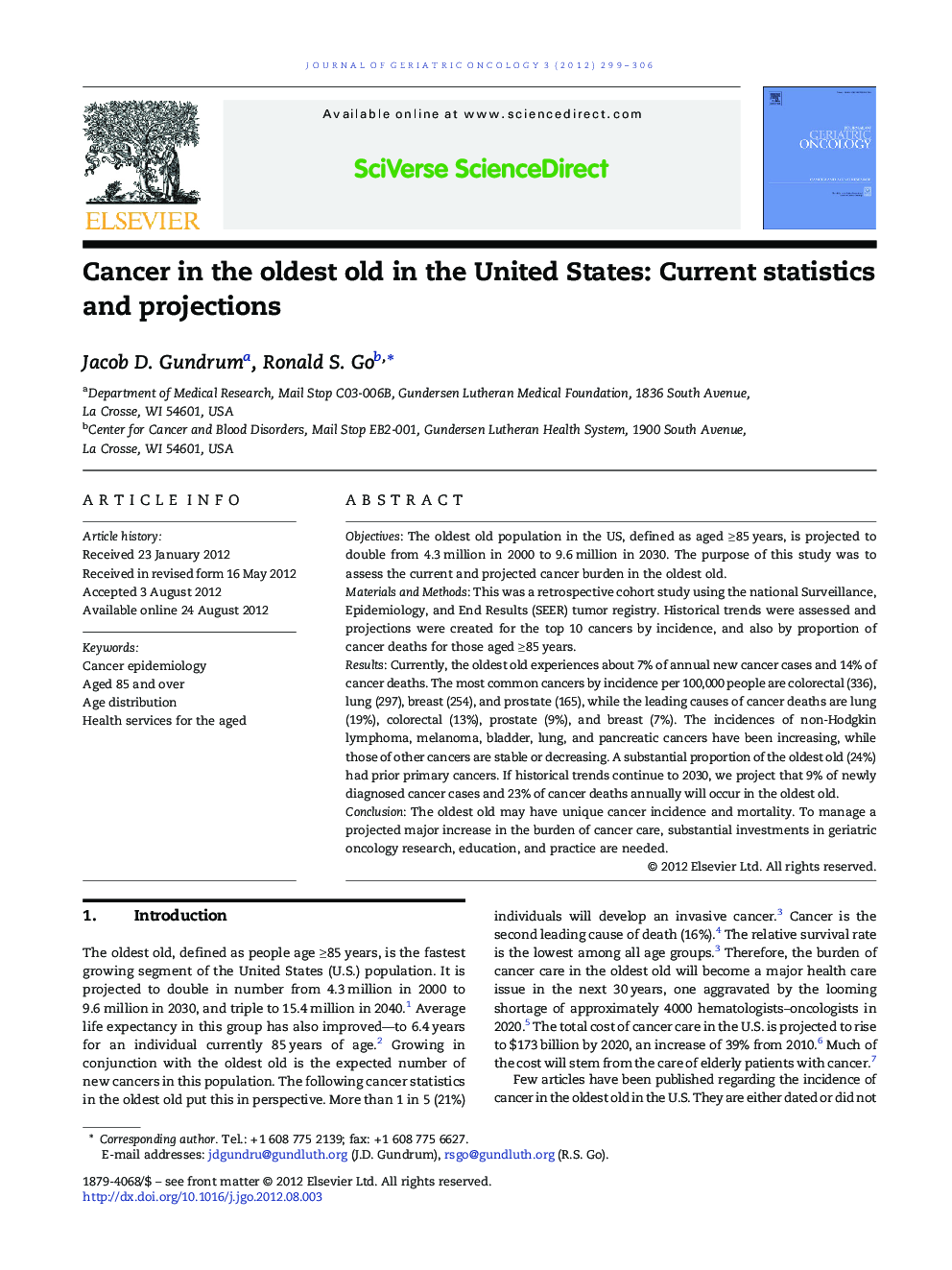| Article ID | Journal | Published Year | Pages | File Type |
|---|---|---|---|---|
| 1912466 | Journal of Geriatric Oncology | 2012 | 8 Pages |
ObjectivesThe oldest old population in the US, defined as aged ≥ 85 years, is projected to double from 4.3 million in 2000 to 9.6 million in 2030. The purpose of this study was to assess the current and projected cancer burden in the oldest old.Materials and MethodsThis was a retrospective cohort study using the national Surveillance, Epidemiology, and End Results (SEER) tumor registry. Historical trends were assessed and projections were created for the top 10 cancers by incidence, and also by proportion of cancer deaths for those aged ≥ 85 years.ResultsCurrently, the oldest old experiences about 7% of annual new cancer cases and 14% of cancer deaths. The most common cancers by incidence per 100,000 people are colorectal (336), lung (297), breast (254), and prostate (165), while the leading causes of cancer deaths are lung (19%), colorectal (13%), prostate (9%), and breast (7%). The incidences of non-Hodgkin lymphoma, melanoma, bladder, lung, and pancreatic cancers have been increasing, while those of other cancers are stable or decreasing. A substantial proportion of the oldest old (24%) had prior primary cancers. If historical trends continue to 2030, we project that 9% of newly diagnosed cancer cases and 23% of cancer deaths annually will occur in the oldest old.ConclusionThe oldest old may have unique cancer incidence and mortality. To manage a projected major increase in the burden of cancer care, substantial investments in geriatric oncology research, education, and practice are needed.
